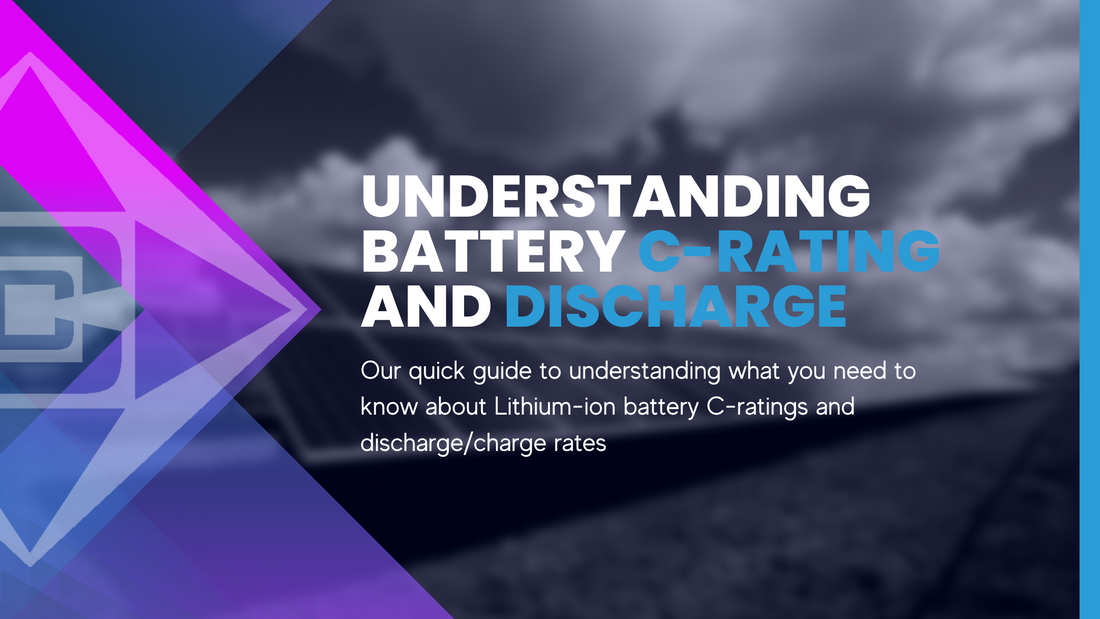Lithium-ion batteries have become the backbone of modern energy storage systems due to their high energy density and reliable performance. To optimize the use of these batteries, it is important to understand battery C-ratings and their maximum continuous discharge, as this directly impacts how well the battery will pair with a specific inverter. In this blog post, we will delve into what C-ratings are, explore examples of batteries with different C-ratings, and discuss how to pair batteries with inverters based on these ratings.
What what does C-rating mean?
C-rating is a metric used to describe the discharge/charge rate of a battery relative to its nominal capacity. In simple terms, it represents the amount that a battery can discharge or charge within one hour. The C-rating is denoted as a multiplier of the battery's nominal capacity, usually expressed as xC, where "x" is the C-rating value.
For instance, a 1C-rated battery with a nominal capacity of 5000Wh can discharge at a constant rate of 5000W (5kW) for one hour before depleting its full capacity. Similarly, a 0.5C-rated battery with the same nominal capacity would discharge at 2500W (2.5kW) per hour for two hours.
Examples of 0.5C, 1C, and 1.5C batteries:
Although there are an endless number of possible C-ratings for batteries, we are going to look at the three most common ratings for residential and commercial energy storage solutions. We are also going to look at the C-ratings in terms of watts (W) and watt-hours (Wh).
0.5C Battery: Let's take a look at the Pylontech UP5000 4.8kWh 48v battery. As this is a 0.5C rated battery, it will only be able to discharge half of its nominal capacity per hour. This will equate to a maximum continuous discharge/charge rate of 2400W (2.4kW).
1C Battery: Freedom Won is a South African based manufacturer that produces some excellent 1C rated batteries. Let's take look at the Freedom Won Lite Home 20/16 LiFePO4 battery. This battery has a nominal capacity of 20 000Wh (20kWh) and will be able to discharge at a continuous rate of 20kW for an hour. As with all 1C rated batteries, you will be able to discharge it's entire nominal capacity within one hour.
1.5C Battery: 1.5C rated batteries such as the Kodak 3.68kWh 48V battery allows you to discharge the battery at a rate of 1.5 times it's nominal capacity within one hour. This means that the battery is capable of providing a continuous discharge of 5000w (5kW) for approximately 44 minutes before depleting the battery capacity.
Pairing batteries with inverters based on C-ratings and wattage
Pairing the right battery with the appropriate inverter is crucial to ensure optimal performance and prevent any bottlenecks. Let's look at two real world examples of inverter and battery pairings
Example 1: Pairing a KODAK OGS5.6 5.6kW solar Off-Grid Inverter with a Kodak 3.68kWh 48V Battery (1.5C rated). The 3.68kWh battery, with a 1.5C rating , can provide a continuous discharge of 5000W (5kW). Hence, it is well suited to work with the 5.6kW inverter without much limitation. This means you can just about draw the full power output of the inverter without causing any strain on the battery. It is important to note however that the battery capacity will be depleted within 44 minutes if continuously discharged at 5000w.
Example 2: The SunSynk 5.32kW 51.2V battery paired with a SunSynk 5kW Single Phase Hybrid Inverter. The 5.32kWh battery in this scenario has a 1C rating, which means it can discharge at a continuous rate of 5320W (5.32kW), allowing you to draw the full power provided by your inverter for up to an hour before depleting the entire battery capacity.
Example 3: Let's consider what would happen if we pared a 5kWh 0.5C rated battery with a 5kW inverter. As the battery would only be able to provide a continuous discharge of 2500w, this would create a bottleneck when paired with the 5kW inverter as you will be limited by the battery discharge rate. To fully utilize the inverter's potential, a 5000W continuous discharge battery would be required. Alternatively, a 5kWh 0.5C rated battery could be paired with a 2.5kW inverter which would allow you to draw the maximum rated power 2500W provided by the inverter for up to two hours before depleting the battery capacity of 5kWh.
In Conclusion
Understanding C-ratings and continuous discharge is essential when selecting the right battery for your specific inverter needs. By considering the C-rating of the battery and matching it with the wattage of the inverter, you can ensure efficient and optimized energy storage solutions. Always remember to check the specifications of both the battery and inverter before making any pairing decisions to avoid any compatibility issues and unlock the full potential of your energy storage system.

